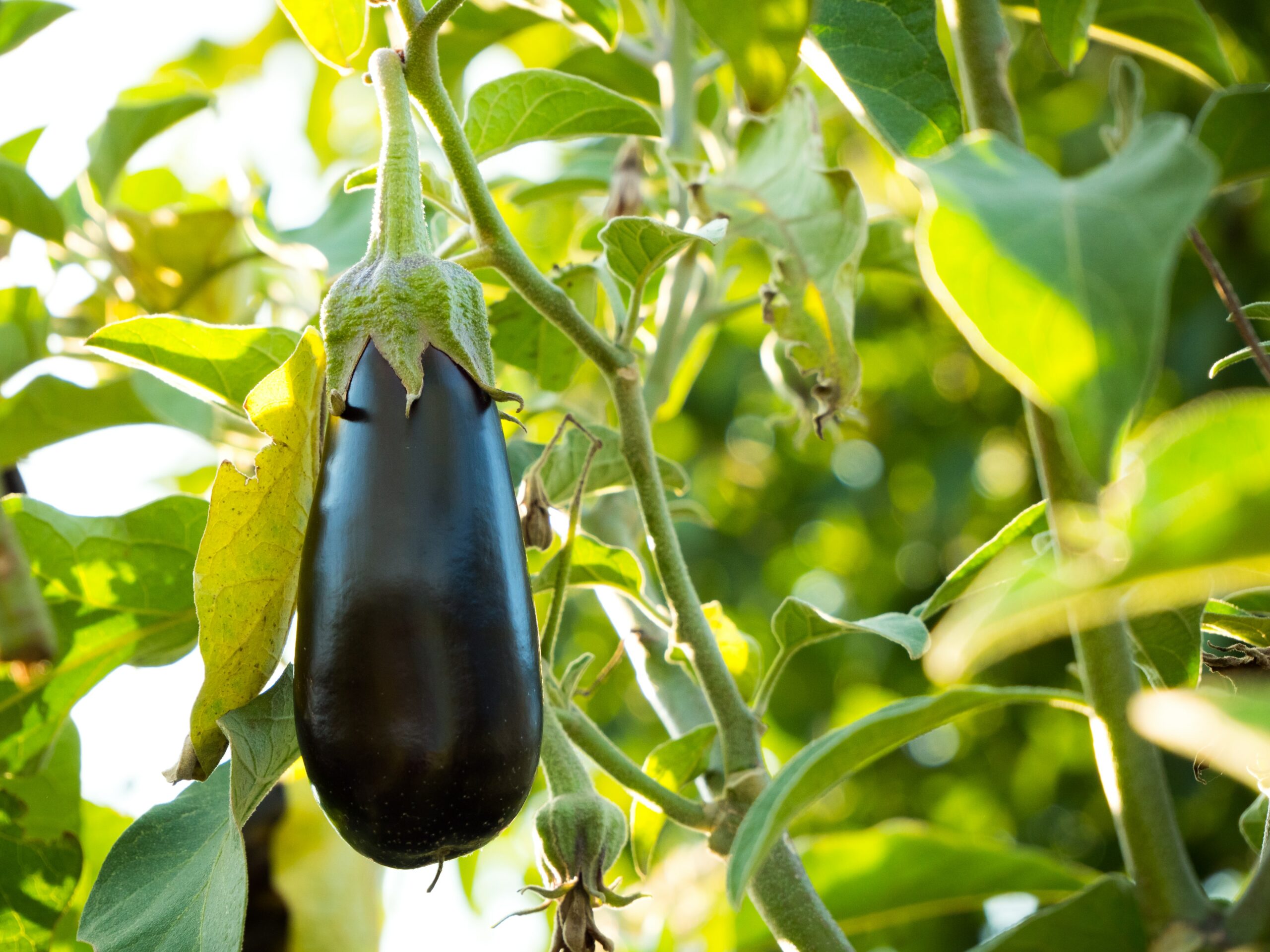Solanum melongena
Aubergine
Englische Bezeichnung: Eggplant
Spanische Bezeichnung: Berenjena
Familie
Nachtschattengewächse (Solanaceae)
Verwendbare Teile
Kartoffel
Hauptbestandteile
-
Mineralstoffe: Kalium
-
Vitamine: Folsäure
-
Sekündäre Pflanzenstoffe: Alkaloide (Solanin), Carotinoide (Beta-Carotin), Antioxidantien, Tannine, Flavonoide
Ernte-Hinweise:
Die Aubergine sollte völlig ausgereift sein; erkennbar an (dunkelvioletter) glänzender Schale (je nach Sorte abweichend), die sich leicht eindrücken lässt. Das Fruchtfleisch sollte weiß, ohne grüne Stellen sein.
Verwendung:
Kochen, Braten, Backen
Die Aubergine sollte aufgrund des giftigen Solanin-Gehalts nicht roh verzehrt werden.
-
z.B.: als Gemüsebeilage, in Suppen, Eintöpfen, Aufläufen, Gemüsepfannen, Pasta-Soßen,…
Die Aubergine stammt ursprünglich aus Asien. In China wurde sie schon vor Jahrtausenden angebaut. Von dort aus gelangte die schöne Frucht, die botanisch eine Beere ist, nach Indien und Persien. Die Araber brachten sie im 7. Jahrhundert nach Spanien – und lange waren die Spanier die einzigen, die auf europäischem Boden die Aubergine genossen haben.
Family
Nightshade family (Solanaceae)
Parts Used:
Eggplant
Key Constituents:
-
Minerals: potassium
-
Vitamins: folic acid
-
Secundary plant substances: Alkaloids (solanine), carotenoids (beta-carotene), antioxidants, tannins, flavonoids
Harvesting Guidelines:
The eggplant should be fully ripe; recognizable by (dark purple) shiny skin (varies depending on the variety), which can be easily squeezed. The flesh should be white, without green spots.
Use:
Cooking, frying, baking
-
e.g.: as a vegetable side dish, in soups, stews, casseroles, vegetable pans, pasta sauces,…
The eggplant should not be eaten raw because of the toxic solanine content.
The eggplant originates from Asia. In China, it was already cultivated thousands of years ago. From there, the beautiful fruit, which is botanically a berry, reached India and Persia. The Arabs brought it to Spain in the 7th century – and for a long time the Spanish People were the only ones who enjoyed the eggplant in Europe.
Familia
Solanaceae
Partes aprovechables:
Berenjena
Principales Constituyentes:
-
Minerales: potasio
-
Vitaminas: Ácido fólico
-
Sustancias vegetales secundarias: Alcaloides (solanina), carotenoides (beta-caroteno), antioxidantes, taninos, flavonoides.
Indicaciones de Cosecha:
La berenjena debe estar completamente madura; se reconoce por su piel brillante (de color púrpura oscuro) (varía según la variedad), que se puede presionar fácilmente. La carne debe ser blanca, sin manchas verdes.
Uso:
cocinar, freír, hornear
-
por ejemplo: ejemplo: como guarnición, en sopas, guisos, cazuelas de verduras, salsas para pasta,…
La berenjena no debe consumirse cruda debido a su contenido de solanina tóxica.
La berenjena es originaria de Asia. Ya se cultivaba en China hace miles de años. Desde allí, esta hermosa fruta, que botánicamente es una baya, llegó a la India y a Persia. Los árabes la trajeron a España en el siglo VII, y durante mucho tiempo los españoles fueron los únicos que disfrutaron de la berenjena en suelo europeo.







































